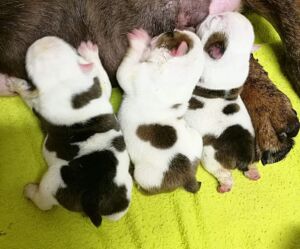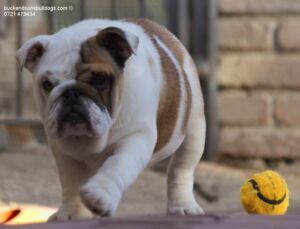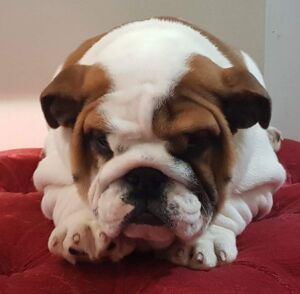WHY DOES THE BULLDOG BREATHE BAD?
Respiratory defects in the English bulldog are always attributable to the upper airways, to what in veterinary medicine is called Brachycephalic Syndrome. It is present in all brachycephalic dogs but in the bulldog it is very evident. These are three problems that are often associated (and in this case the respiratory situation is quite serious) but sometimes also present alone. The first problem concerns the nostrils: the bulldog often suffers from stenosis of the nostrils (they are more closed than normal) and the air struggles to enter this too small gap. The second problem concerns the soft palate: the bulldog suffers from hyperplasia of the soft palate, a problem that essentially involves an excess of this tissue that obstructs the entry of air. The third problem concerns the size of the trachea which in the English bulldog can be smaller than normal and give rise to tracheal hypoplasia. In these cases, the lumen (or diameter) of the trachea is very small and does not allow for good air entry. To this we can also add the eversion of the laryngeal saccules. All these anatomical defects do not allow a correct supply of air and consequently a good oxygenation thus causing a reduction in the flow of air circulating in the upper airways and causing clinical disturbances of obstruction of the latter such as: noisy breathing, stridors, cyanosis (when mucous membranes turn blue), syncope (the dog loses consciousness). The clinical signs are most evident when the dog is subjected to physical exertion, a state of excitement and a high ambient temperature. Unfortunately they are defects related to the morphology of the bulldog, so they are often present. Another thing should also be underlined: bulldogs are extremely sensitive animals and it frequently happens that dogs that breathe very well in their habitat, when they are in stressful situations, have respiratory syndromes. This is not due to any anatomical defect but only to an excess of sensitivity which is part of the genetic and character heritage of the bulldog. Surgically it is possible to correct parts of these problems with excellent results (both for what concerns the stenosis of the nostrils, the hyperplasia of the soft palate and the eversion of the laryngeal saccules) while for the hypoplasia of the trachea the speech is more complex.
Read more by clicking on the images or categories
- All
- Dermatology
- Eye Pathologies
- Prophylaxis and Vaccines
- Bulldog Breathing
- Reproduction
- Various

LAMENESS

OTITIS

HIP DYSPLASIA

INGROWN TAIL

SWIMMING PUPPY SYNDROME

CHONDROPROTECTED

OTOHEMATOMA

KILLITAM

PYOMETRA

MONORCHIDISM AND CRYPTORCHIDISM

HYSTERIC PREGNANCY

HEAT AND FALSE HEAT

PROLAPSE OF THE URETHRA

DISTICHIASI

ENTROPION

HYPERTROPHY OF THE GLAND OF THE THIRD PALPEBRA (CHERRY EYE)

HEAT STROKE

WHY DOES THE BULLDOG BREATHE BAD?

LEPTOSPIROSIS

VACCINAL PROPHYLAXIS

LEISHMANIOSIS

PHILARIOSIS

ATOPIC ALLERGY

PIODERMITE

INTERDIGITAL CYSTS

PODODERMATITIS

ACNE

CYCLIC ALOPECIA OF THE FLANK

DEMODECTIC MANGE
Menu

